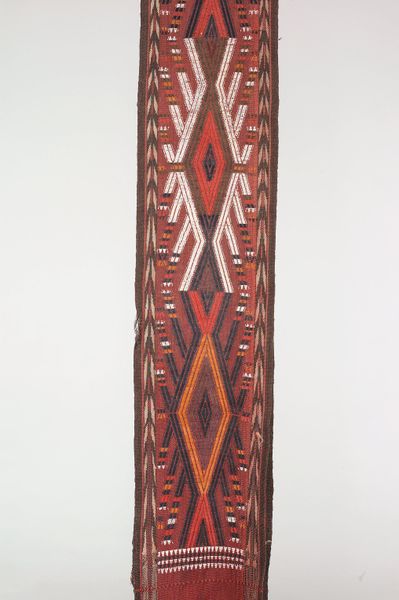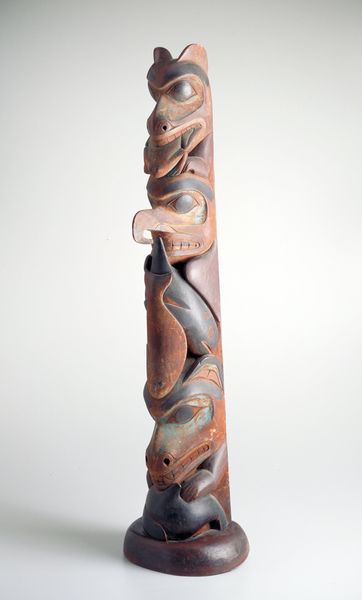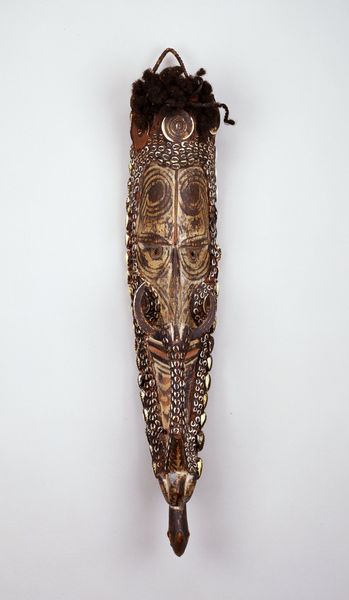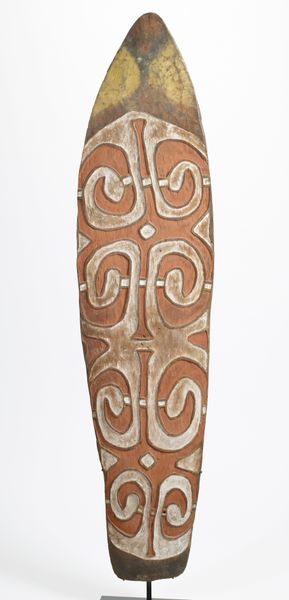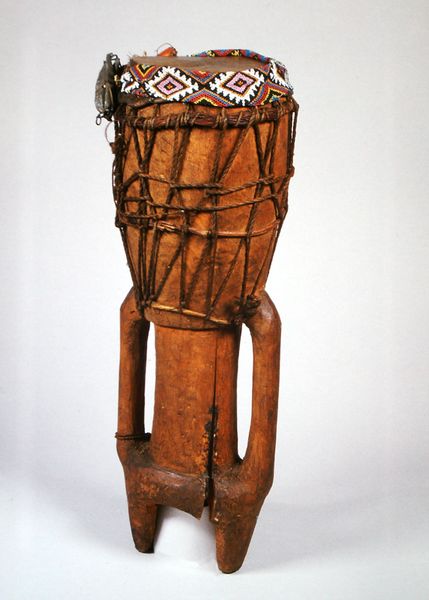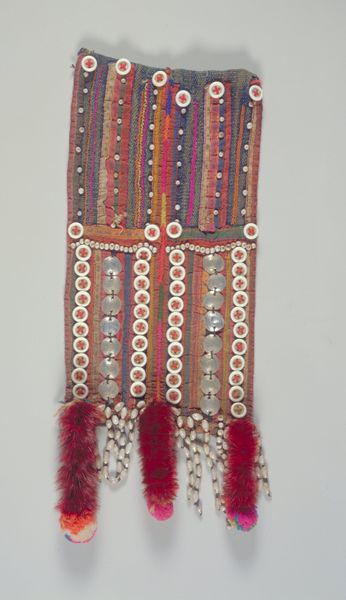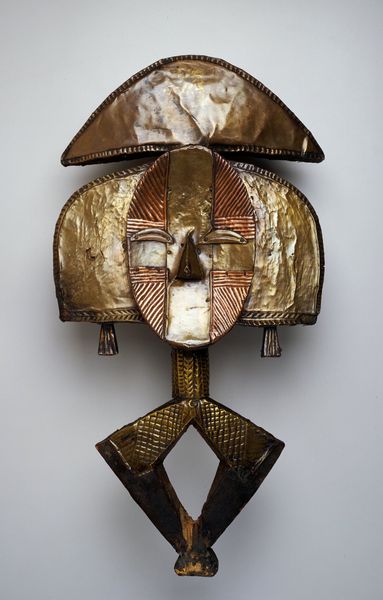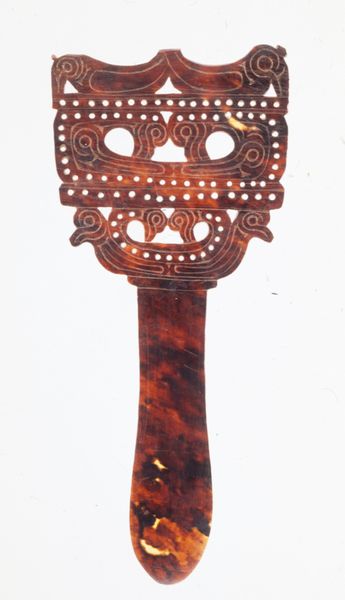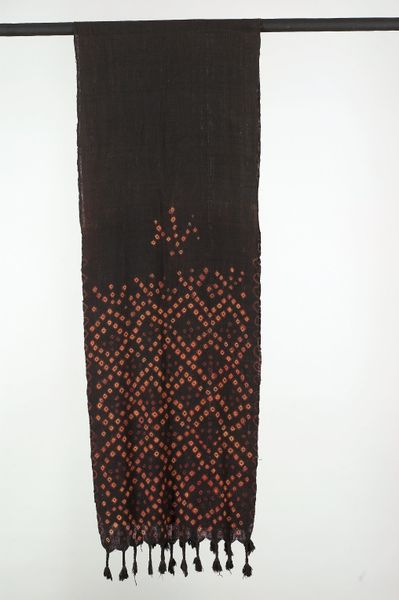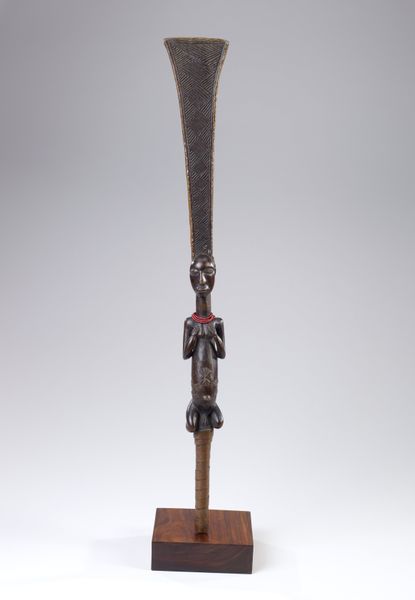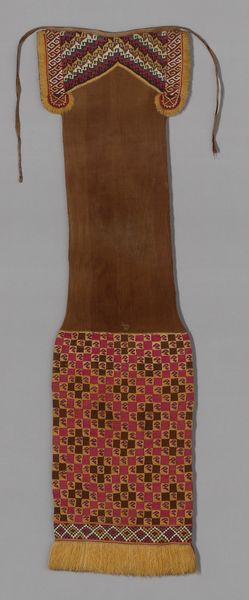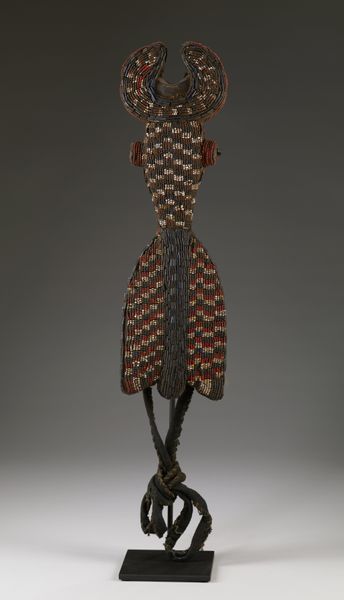
sculpture, wood
#
figuration
#
geometric
#
sculpture
#
wood
Dimensions: 82 1/2 x 18 x 9 1/2 in. (209.6 x 45.7 x 24.1 cm)
Copyright: Public Domain
Editor: Right, next up is the Plank Mask, dating from around 1960, made by the Bwa people. It’s a striking sculpture of wood with paint and I can’t help but notice how it seems to embrace the ideas of abstract and geometric expression. What do you see in this piece? Curator: I see a testament to the intricate relationship between materiality and meaning. The wood itself is not just a neutral support; it carries inherent value based on the labor required to obtain it and transform it. Editor: So you are saying that there's significance in using wood as the material? Curator: Absolutely. The act of carving and painting—the expenditure of physical labor and artistic skill—transforms readily available resources into a powerful cultural object. Note also the stark geometric patterns. These aren't just decorative; they're painstakingly applied, probably from a mix of organic materials available, representing beliefs and moral codes, interwoven into the daily life and community values. How do you think the availability of pigment or tools shapes these forms? Editor: I guess that scarcity would likely play a large part, maybe dictating simple and functional art. Curator: Precisely. And in turn, such material realities influenced how meaning was made and conveyed through this object within the community, emphasizing not only spiritual content, but also technical expertise. Editor: This mask certainly gives new perspective to looking at art beyond its face value, where materials used have deeper meaning. Curator: Indeed, examining the resources and processes offers a crucial lens for understanding art’s engagement with both the environment and societal structures that bring cultural objects into being.
Comments
minneapolisinstituteofart almost 2 years ago
⋮
Masks play an important role in the renewal ceremonies of the Bwa. The masks are danced during initiation ceremonies for young men and women, and appear at funerals and memorial services. They are also danced during the harvest ceremonies. During the fifteen day initiation ceremony, young petitioners are taught the meanings of the symbols on the mask. They learn the importance of becoming a respected Bwa, and the dangers of straying from the path of social behavior established by the ancestors. These lessons are symbolically represented on the mask. The double zig-zag line on the plank of the mask represents the path of the ancestors. The crescent shape on the top of the plank represents the moon, and the importance of time in the ceremonial year when masks are danced. The checkerboard pattern on the back of the mask represents the value of learning. When young initiates graduate from the ceremony, they are given a new white goat hide to sit on during ceremonies. Years later, the young initiate becomes an elder and the hide ages to a dark color. The checkerboard pattern emphasizes the reliance between the elders, symbolized by the dark areas, and the young initiates, symbolized by the light areas.
Join the conversation
Join millions of artists and users on Artera today and experience the ultimate creative platform.
